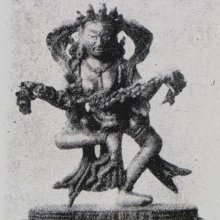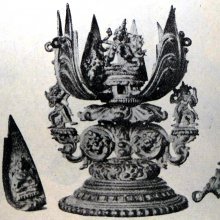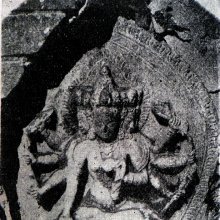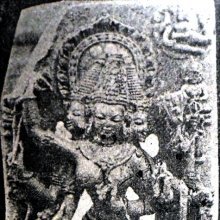Dipatara, Dīpatārā, Dipa-tara: 1 definition
Introduction:
Dipatara means something in Buddhism, Pali. If you want to know the exact meaning, history, etymology or English translation of this term then check out the descriptions on this page. Add your comment or reference to a book if you want to contribute to this summary article.
Images (photo gallery)
In Buddhism
Tibetan Buddhism (Vajrayana or tantric Buddhism)
Source: archive.org: The Indian Buddhist IconographyDīpatārā (दीपतारा) refers to one of the ten Goddesses of the Vajratārāmaṇḍala belonging to Vajratārā: one of the various emanations of Ratnasambhava, as mentioned in the 5th-century Sādhanamālā (a collection of sādhana texts that contain detailed instructions for rituals).—Accordingly, in the four cardinal points there should be four Goddesses on the four petals of the lotus on which Vajratārā sits:—“On the west is Dīpatārā, who carries the torch in her hands, is of yellow complexion, profusely ornamented and has ear-rings swaying.”.
All these Goddesses [viz., Dīpatārā] should be situated in the inner circle. [...] These Goddesses originate from the ten different letters of the mantra of Vajratārā, which is “oṃ tāre tuttāre ture svāhā”, consisting of ten syllables. Each syllable brings forth a Goddess, and these Goddesses are said to be the embodiments of the ten paramitas of the Mahāyāna School.

Tibetan Buddhism includes schools such as Nyingma, Kadampa, Kagyu and Gelug. Their primary canon of literature is divided in two broad categories: The Kangyur, which consists of Buddha’s words, and the Tengyur, which includes commentaries from various sources. Esotericism and tantra techniques (vajrayāna) are collected indepently.
See also (Relevant definitions)
Full-text: Vajrataramandala.
Relevant text
Search found 1 books and stories containing Dipatara, Dīpatārā, Dipa-tara, Dīpa-tārā; (plurals include: Dipataras, Dīpatārās, taras, tārās). You can also click to the full overview containing English textual excerpts. Below are direct links for the most relevant articles:
The Indian Buddhist Iconography (by Benoytosh Bhattachacharyya)



